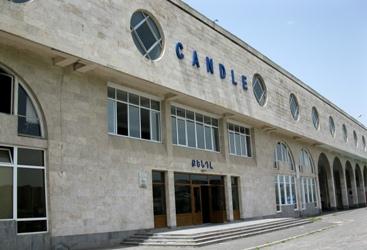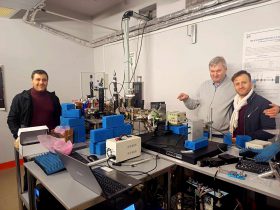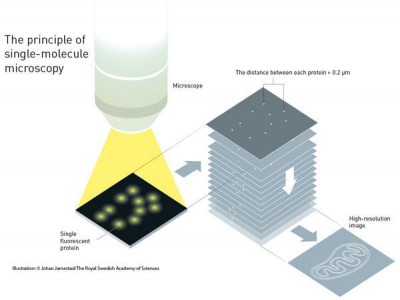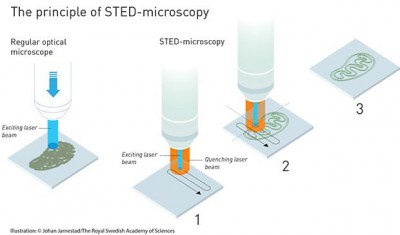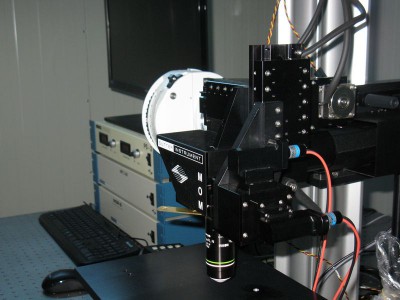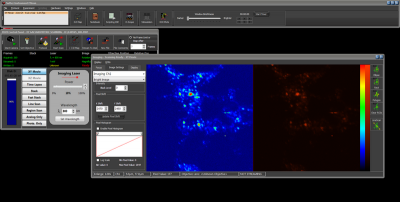October 8, 2014
The 2014 Nobel Prize in Chemistry was awarded to Eric Betzig, Stefan W. Hell and William E. Moerner for “the development of super-resolved fluorescence microscopy”. Stefan W. Hell ( Germany) was honored for his work on fluorescence microscopy and development of Stimulated emission depletion (STED) microscopy. Eric Betzig and William E. Moerner (USA) were honored for development of single-molecule (SM) microscopy.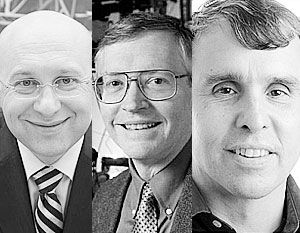
The press-release of Nobel Committee is available at http://www.nobelprize.org/nobel_prizes/chemistry/laureates/2014/press.pdf
STED – microscopy: Two laser beams are utilized; one stimulates fluorescent molecules to glow, another cancels out all fluorescence except for that in a nanometre-sized volume. Scanning over the sample, nanometre for nanometre, yields an image with a resolution better than Abbe’s stipulated limit.
The Single-molecule microscopy. The method relies upon the possibility to turn the fluorescence of individual molecules on and off. Scientists image the same area multiple times, letting just a few interspersed molecules glow each time. Superimposing these images yields a dense super-image resolved at the nanolevel.
The two-photon fluorescent microscope of Sutter Instruments driven by ultrafast solid- state infrared laser is recently successfully installed in bio-medical station of the DELTA laboratory at CANDLE.
The CANDLE team congratulates the Nobel Prize winners for their great achievements that open the new highlights in biology, medicine, chemistry, material and environmental sciences at nanoscale level.
The first fluorescence image from the biological specimen at the DELTA microscope.




